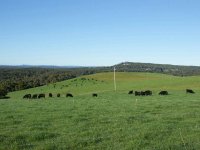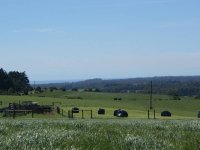I'm not familiar with this guy's ranch, but in general my favorite Angus cattle are those raised in the drier portions of the Great Plains states and plains of Wyoming and Montana. We use a lot of Sitz Alliance genetics. I think the kind of environment cattle originate from plays a big role in their ability as a momma or a bull. In other words, if you are buying cattle from long established ranches whose cattle have developed over decades in that environment, odds are those cattle are going to be pretty functional for the average commercial operator. In my mind, the environmental long-term origin of cattle is as important as the actual pedigree. I would rather bring western-raised cattle to our environment - from low volume, high quality grass to our area with larger volume, native grasses than animals from say the southeastern or midwestern part of the U.S. that are more used to higher volume forage.


